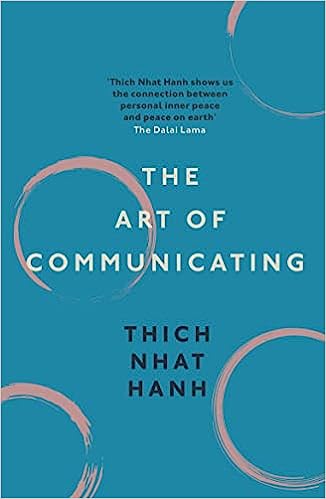Welcome to Thinkers Books, a platform dedicated to exploring and understanding the profound depths of literature. I’m Robert N. Jacobs, your guide for today as we delve into the transformative world of ‘The Art of Communicating’ by the globally acclaimed Zen master and peace activist, Thich Nhat Hanh.
In ‘The Art of Communicating’, Thich Nhat Hanh presents us with the idea that communication forms the core of our existence. He highlights the crucial role of mindful listening and how expressing ourselves authentically can lead to significant transformations in our relationships.
The book is divided into three key sections. The first part emphasises communication’s incredible impact on our lives, pointing out how often we underestimate the power of words and silence. In the second section, Hanh provides practical techniques to enhance our communication skills. Finally, the third part presents a series of real-life case studies demonstrating how these communication techniques can be applied to everyday scenarios.
As we dive deeper into this enlightening book, here are my top five learning points:
- Mindful Listening: Hanh emphasises the importance of being fully present and attentive during conversations. This goes beyond just hearing the words that are being said. It involves understanding the emotions behind those words, observing the speaker’s body language, and responding to show you’re engaged in the conversation. Mindful listening allows for a deeper connection with others and creates a safe space where people feel heard, understood, and valued.
- Authentic Expression: This learning point is about voicing our genuine emotions and thoughts, even when complicated. According to Hanh, authenticity in communication involves the courage to express our feelings honestly and openly, without fear of judgment or rejection. It helps us avoid misunderstandings, resolve conflicts effectively, and build stronger, more genuine relationships.
- Compassionate Speech: Compassionate speech, or ‘loving speech,’ is about using words that promote positivity, goodwill, and understanding. Hanh encourages us to be mindful of our terms’ impact on others. By choosing to communicate compassionately and respectfully, we can create a more peaceful and harmonious environment and foster better relationships.
- Silence: Hanh teaches that silence can be a powerful form of communication. Sometimes, choosing not to speak can convey respect, understanding, and deep listening. It allows us to absorb what the other person is saying, reflecting on it before responding. Silence also gives us the space to manage our emotions and react more thoughtfully and thoughtfully.
- The Six Mantras of Loving Speech: Hanh introduces six specific phrases or ‘mantras’ designed to foster understanding, compassion, and love in our interactions with others. These mantras serve as practical tools for effective communication, reminding us to express appreciation (“I am here for you”), to acknowledge the other person’s suffering (“I know you are there, and I am happy”), to apologise when we’ve hurt someone (“I am sorry”), to express our pain in a non-blaming way (“I suffer, please help”), to share our joy (“This is a happy moment”), and to express our love (“You are partly right”). Practising these mantras daily can cultivate more meaningful connections with the people around us.
‘The Art of Communicating’ is a unique contribution to the genre of self-help literature, going beyond the basics of communication to explore its spiritual dimensions. This book has reshaped my understanding of communication and its potential to nurture relationships. The practical techniques it offers have proven immensely beneficial in my daily interactions.
I invite you to continue exploring more insightful summaries from Thinkers Books. As Thich Nhat Hanh eloquently states, ‘Our communication is our continuation.’ Let’s continue growing, learning, and transforming together through enriching conversations. Happy reading!







